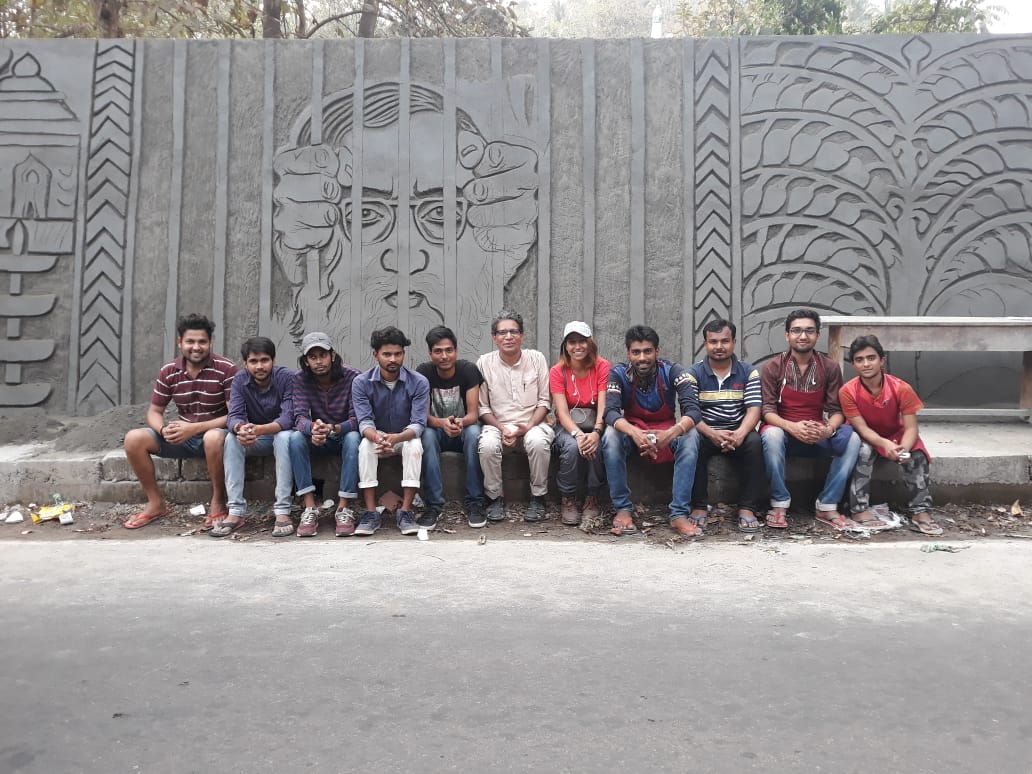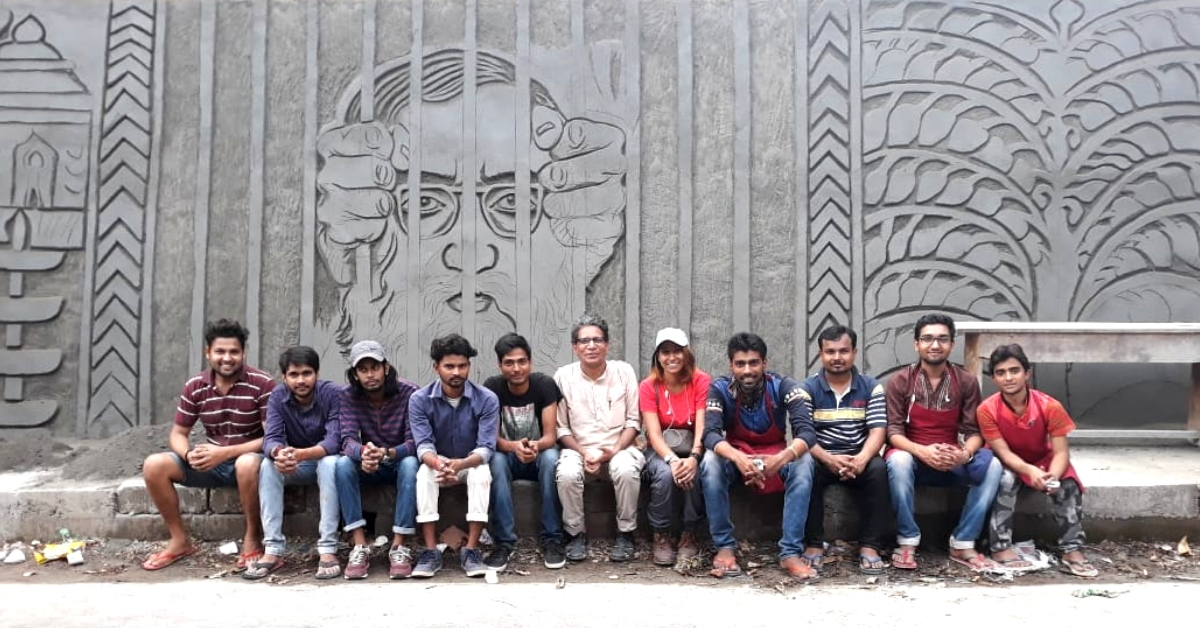Located in the heartland of Palakkad district in Kerala, Cherpulassery is a town that is off the tourist radar.
Unknown to many, it played a crucial role during India’s freedom struggle. Another reason why Cherpulassery remains a culturally significant town is because a large number of Kathakali and traditional percussion artistes in the state, come from here.
Besides Malayalis and seekers of Kerala’s art and culture legacy, the town rarely finds any mention or recognition from the rest of the country.
But that is all set to change, thanks to the painstaking efforts of an art professor and his students.
The ‘Wall of Peace’ is the brainchild of Suresh K Nair, a renowned artist from the nearby hamlet of Adakkaputhur and a professor at the Banaras Hindu University.

Built across the Government Higher Secondary School in Cherpulassery, this 7,000-sq-m wall is a work of mural art that has been developed in a scroll format with 25 panels depicting the historical and cultural legacy of the town.
In addition to paying tribute to Mozhikkunnam Brahmadathan Namboodiripad, the legendary freedom fighter, and depicting Mahatma Gandhi’s visit to Cherpulassery, the wall also showcases the visages of Netaji Subhas Chandra Bose, and his confidant PS Kuttikrishnan Nair carved skillfully in cement.
One can also find panels depicting the artistic legacy of Cherpulassery, the cattle race at Puthanalkkal, the region’s obsession with football as well as the history of Cherpulassery school.
But, the highlight of Wall of Peace is in its name itself—Peace!
Across the wall, one can see the word engraved in nearly 250 officially identified languages including Sanskrit, Tamil, Hindi, Kannada, Bengali, German, Chinese, Japanese, Greek, Nepali, Arabic, and Egyptian, to name a few.
“Our work is derived from the Sanskrit shloka, ‘Lokah samastah sukhino bhavantu.’ Which means—may peace and happiness prevail everywhere. This verse is engraved in Malayalam in the peace panel,” says the fine arts professor to The Better India.
The mirrors embedded in the centre of the peace message panel are also eye-catching and add to its significance.
“I am deeply inspired by Sri Narayana Guru, and my ideology behind this installation was for every person who looks into the mirror to realise that peace lies within us all,” Suresh shares.
One would wonder how did a professor from BHU come to a town as far-flung as Cherpulassery?
“Every year, I take my students to work on various projects outside the precinct of the University with the aim to further their scope of learning through exposure and get them out of their comfort zone. This time I chose Cherpulassery, which is close to my birthplace and 12 of my final year mural students as well as a student from the Sankaracharya University in Kalady, joined me in this pursuit. The government school, where we are building the wall, didn’t have one to begin with. It is nearly 150 years old!” adds Suresh.
Interestingly, the idea behind the Wall of Peace came to Suresh during his student days at Visva Bharati University in Kolkata.
“Back then, I used to be a tea addict! To put an end to this ‘bad’ habit, I decided to go on a fast for a month and consumed only fruits and coconut water. On the last day of the fast, an idea cropped into my head, and that formed the foundation of this project, many, many years later,” he recalls.
The project commenced towards the end of last year and has now become a community initiative.
Today, Suresh and his students, who have have been carving brilliant motifs and elaborate patterns along the wall, find help and support from children, teachers, residents as well as the labourers.
“We have about ten masons, eight labourers, an engineer as well as a contractor from Cherpulassery involved in the project. The work is still ongoing, since I don’t get leave very often from the University. Currently, local painters are priming the wall. Hopefully, the wall will be standing in its entirety by March 20-23. We are yet to decide on the inauguration date,” Suresh concludes.
You may also like: With Their Unique Handmade Traditions, These 15 Little-Known Villages Are a Must-Visit!
To know more about the Wall of Peace and his other art projects, you can write to Suresh K Nair at sureshnair71@rediffmail.com.
(Edited by Gayatri Mishra)
Like this story? Or have something to share?
Write to us: contact@thebetterindia.com
Connect with us on Facebook and Twitter.
If you found our stories insightful, informative, or even just enjoyable, we invite you to consider making a voluntary payment to support the work we do at The Better India. Your contribution helps us continue producing quality content that educates, inspires, and drives positive change.
Choose one of the payment options below for your contribution-
By paying for the stories you value, you directly contribute to sustaining our efforts focused on making a difference in the world. Together, let's ensure that impactful stories continue to be told and shared, enriching lives and communities alike.
Thank you for your support. Here are some frequently asked questions you might find helpful to know why you are contributing?

